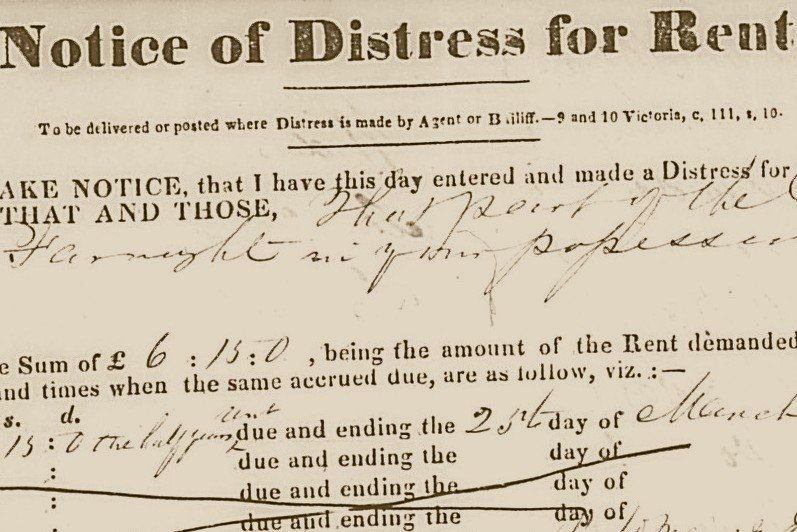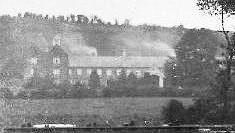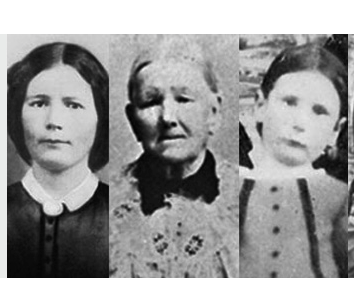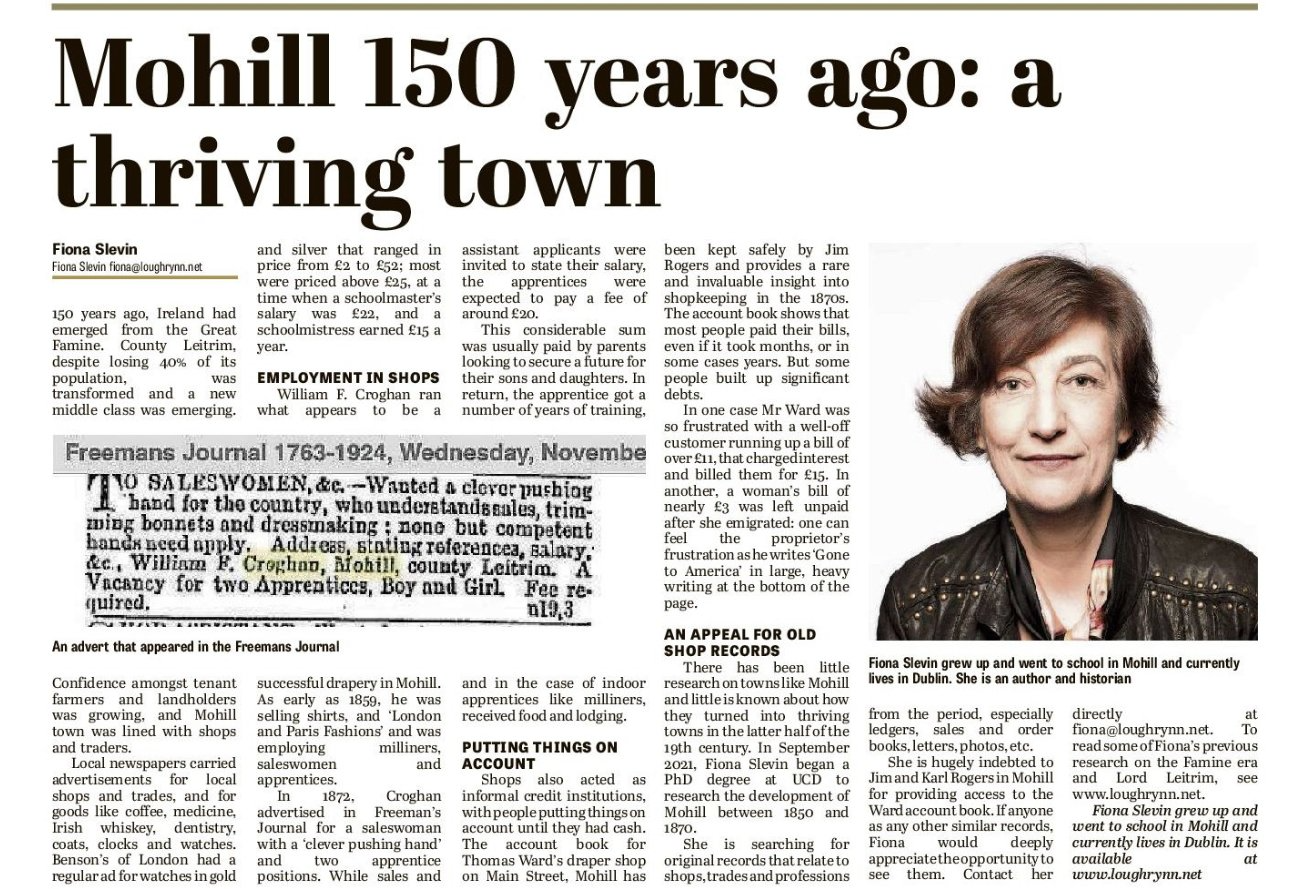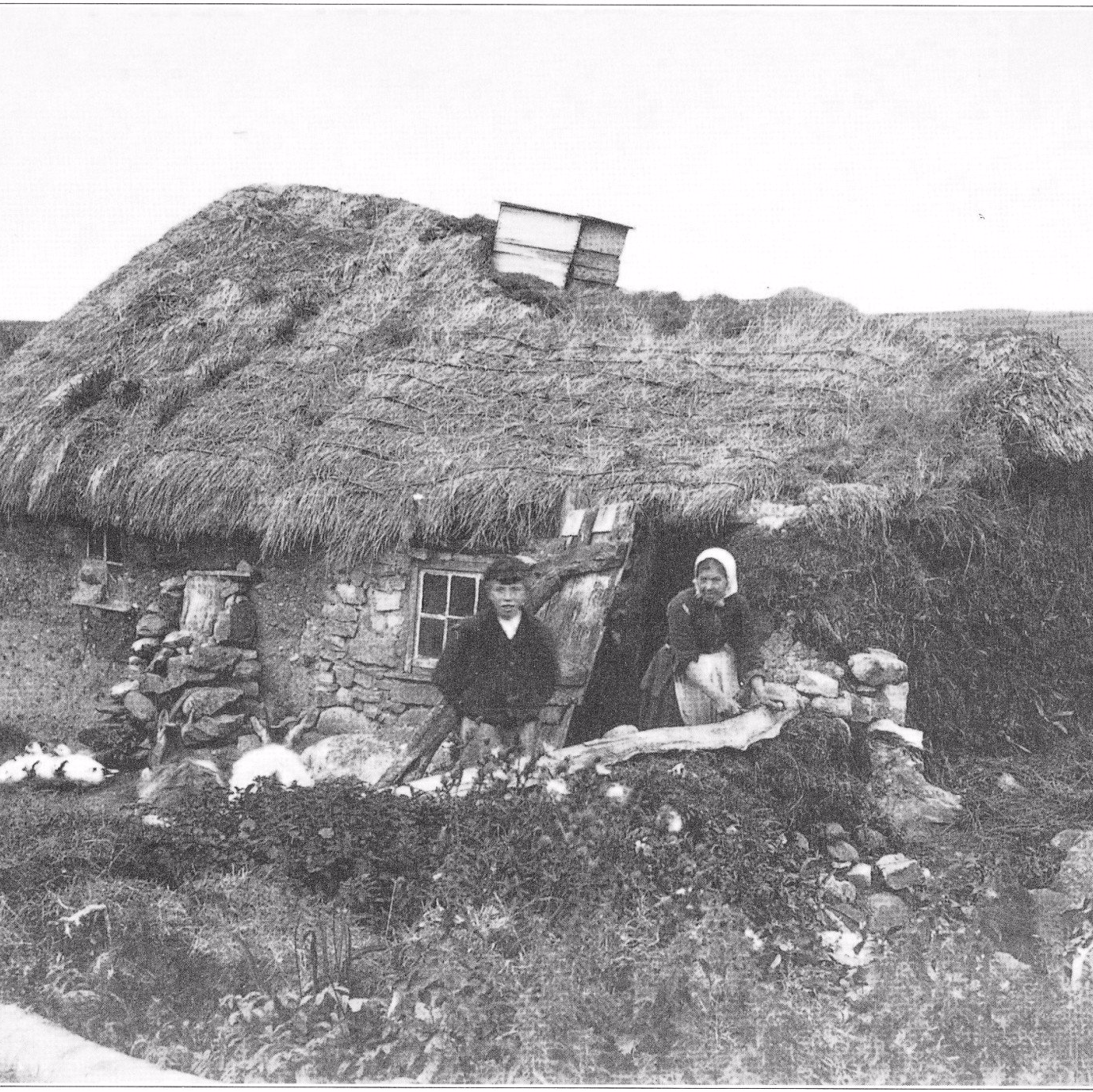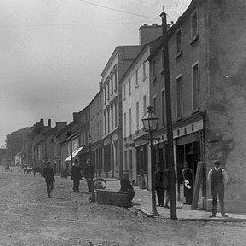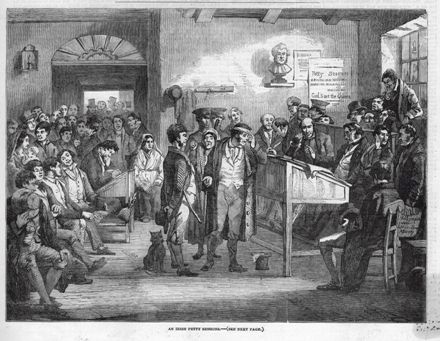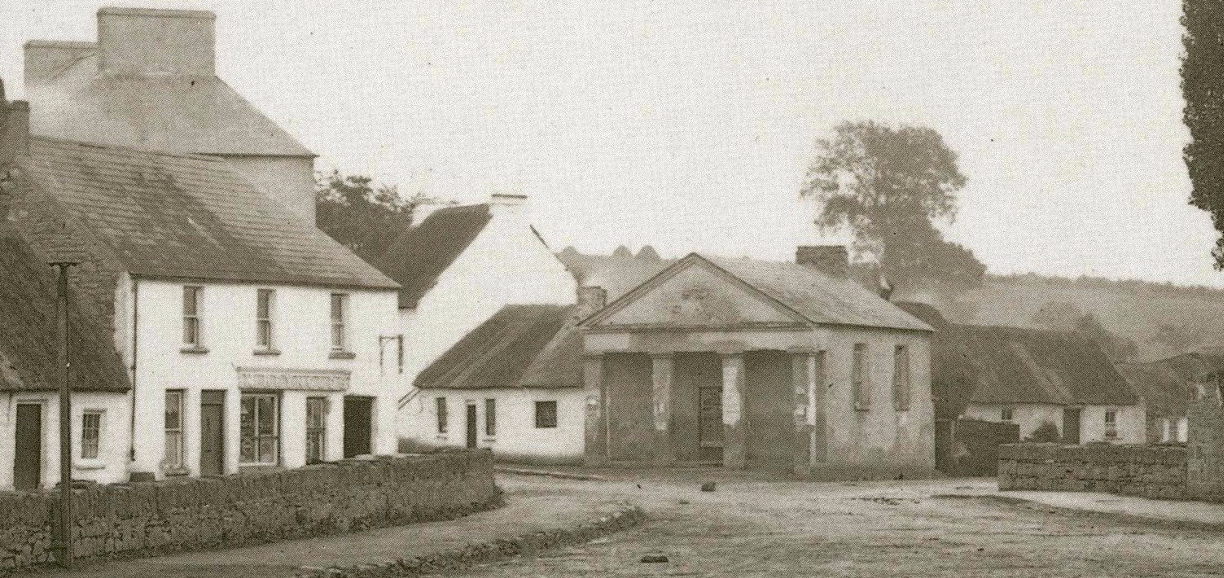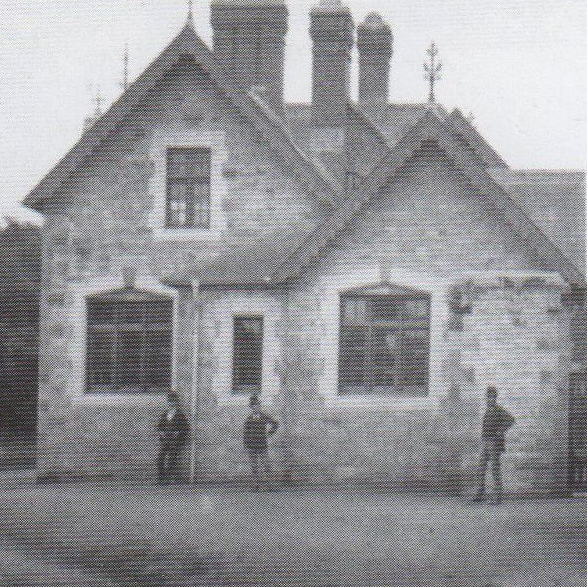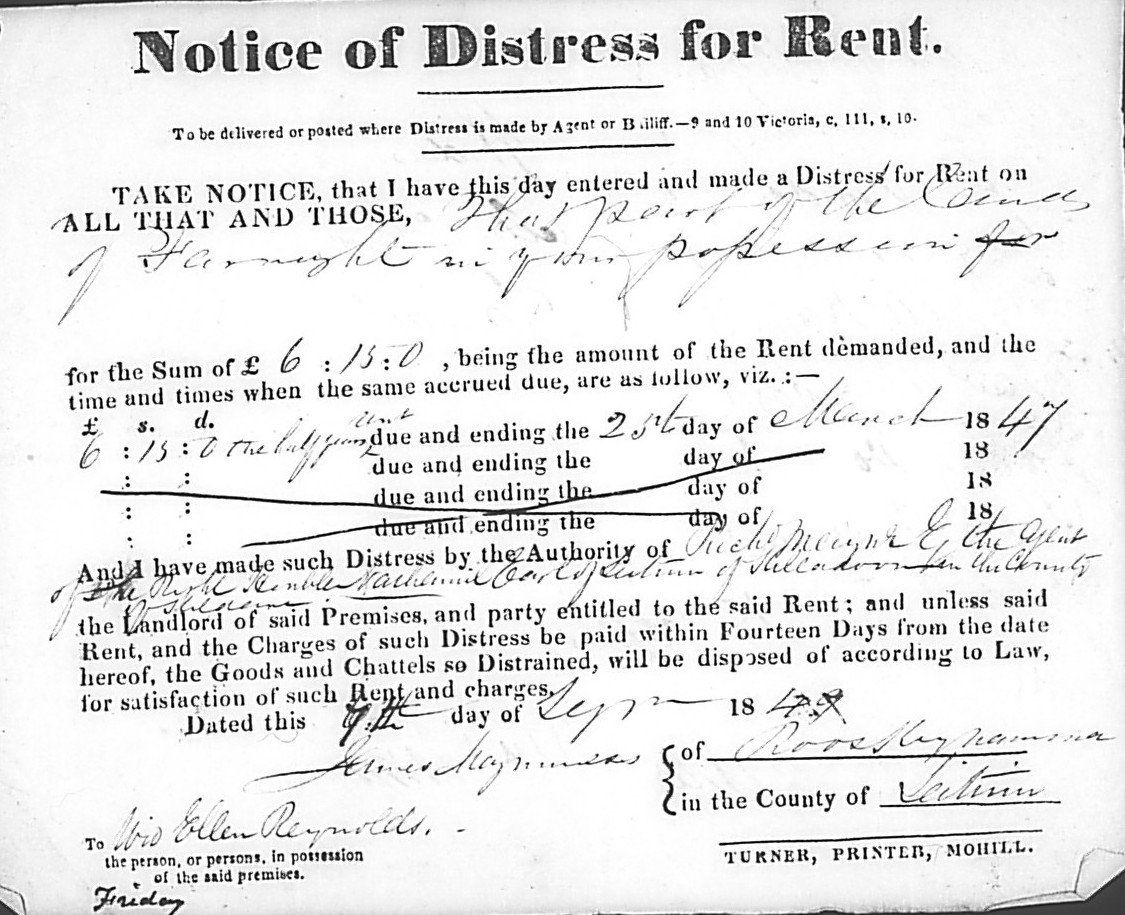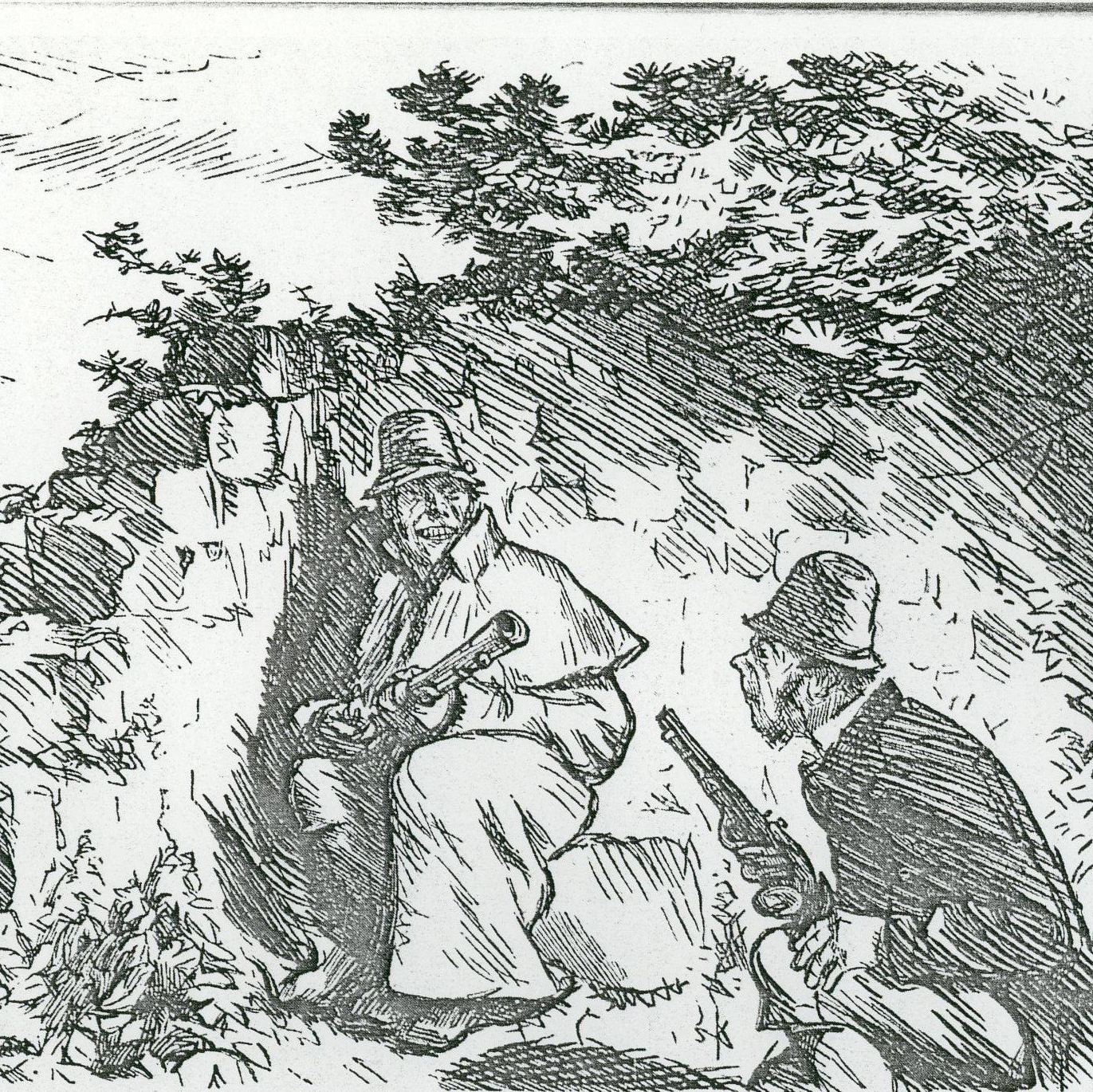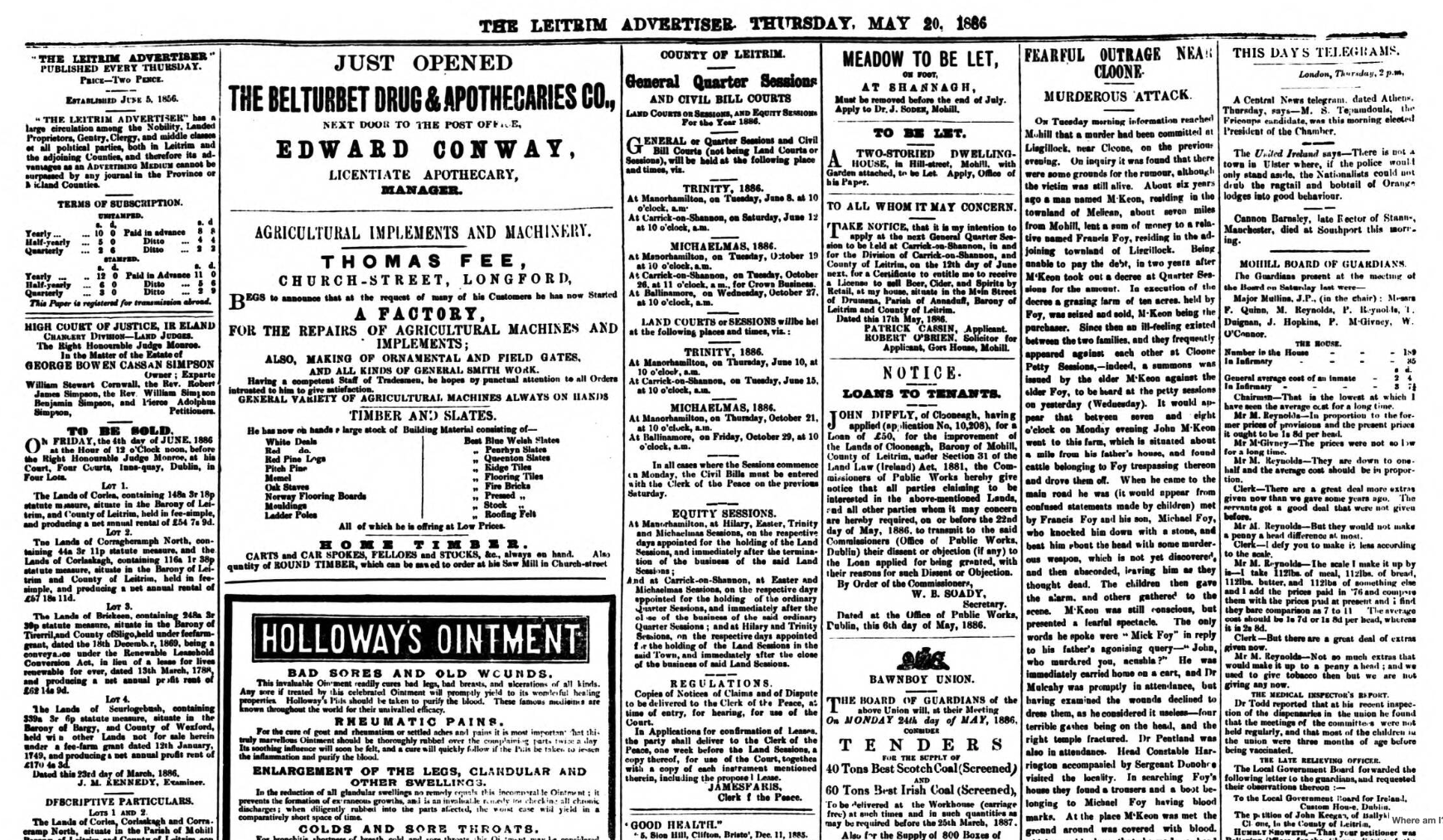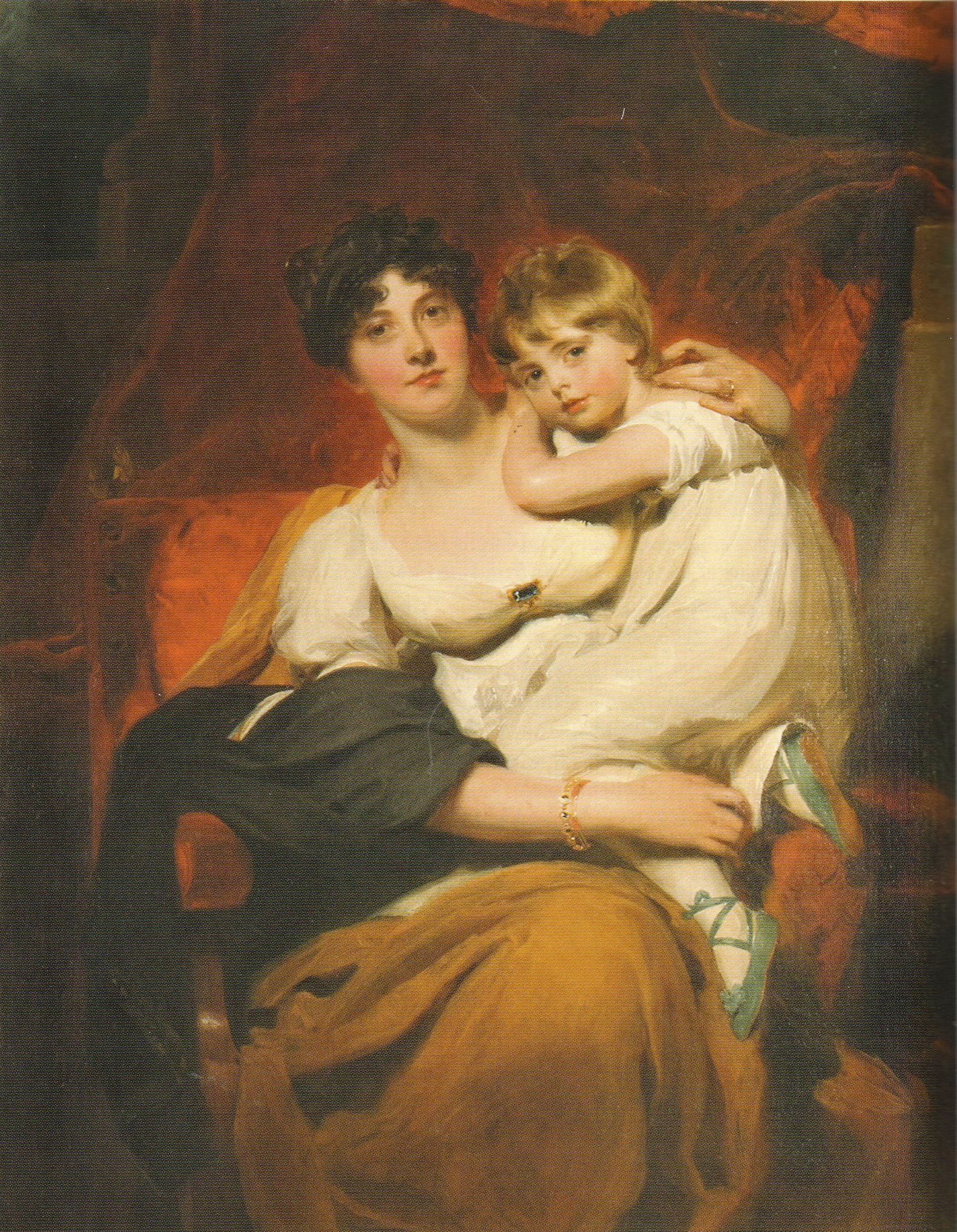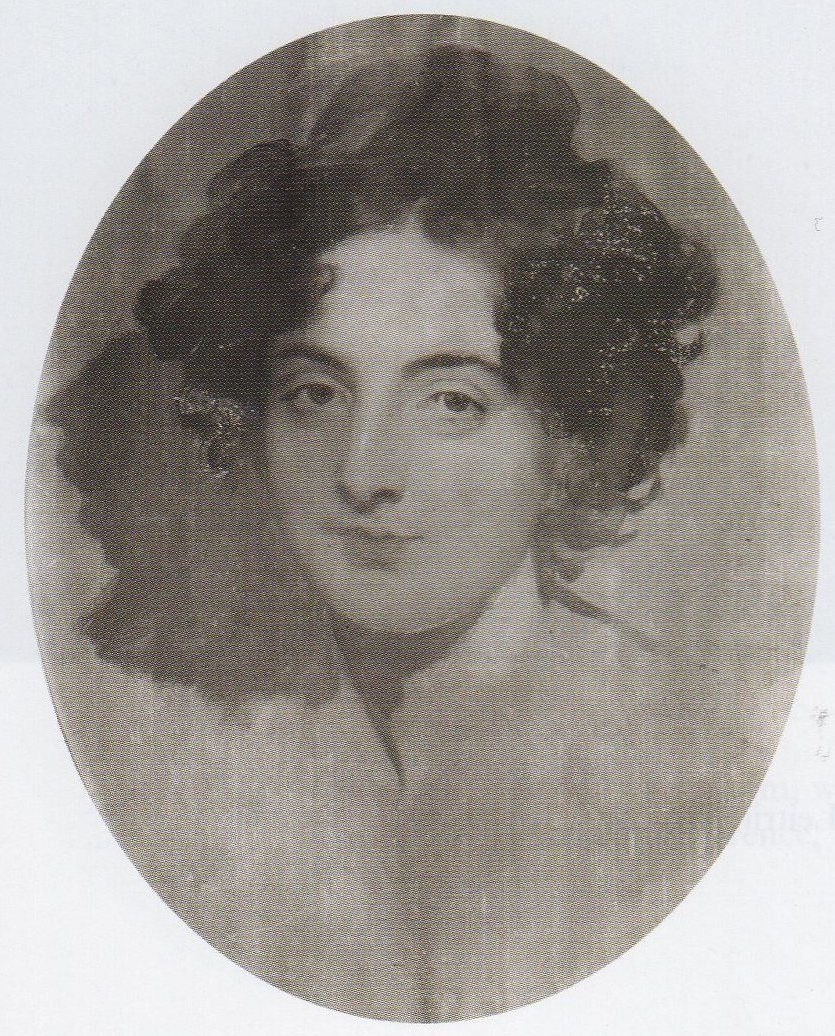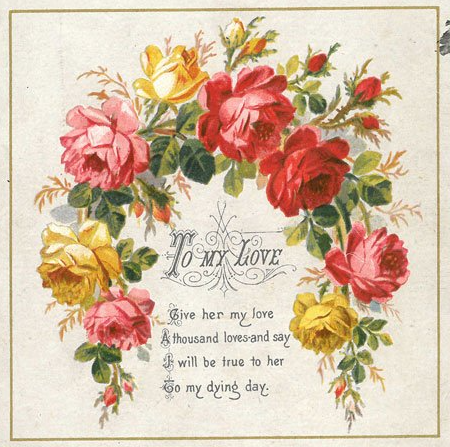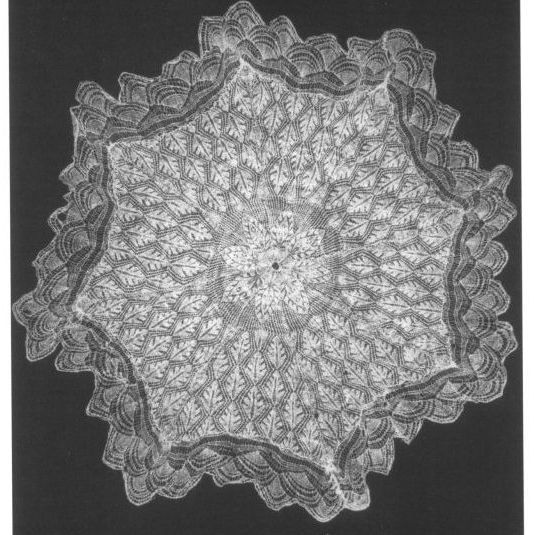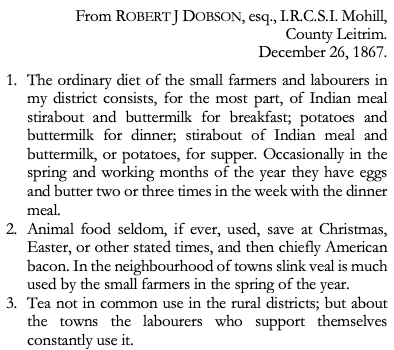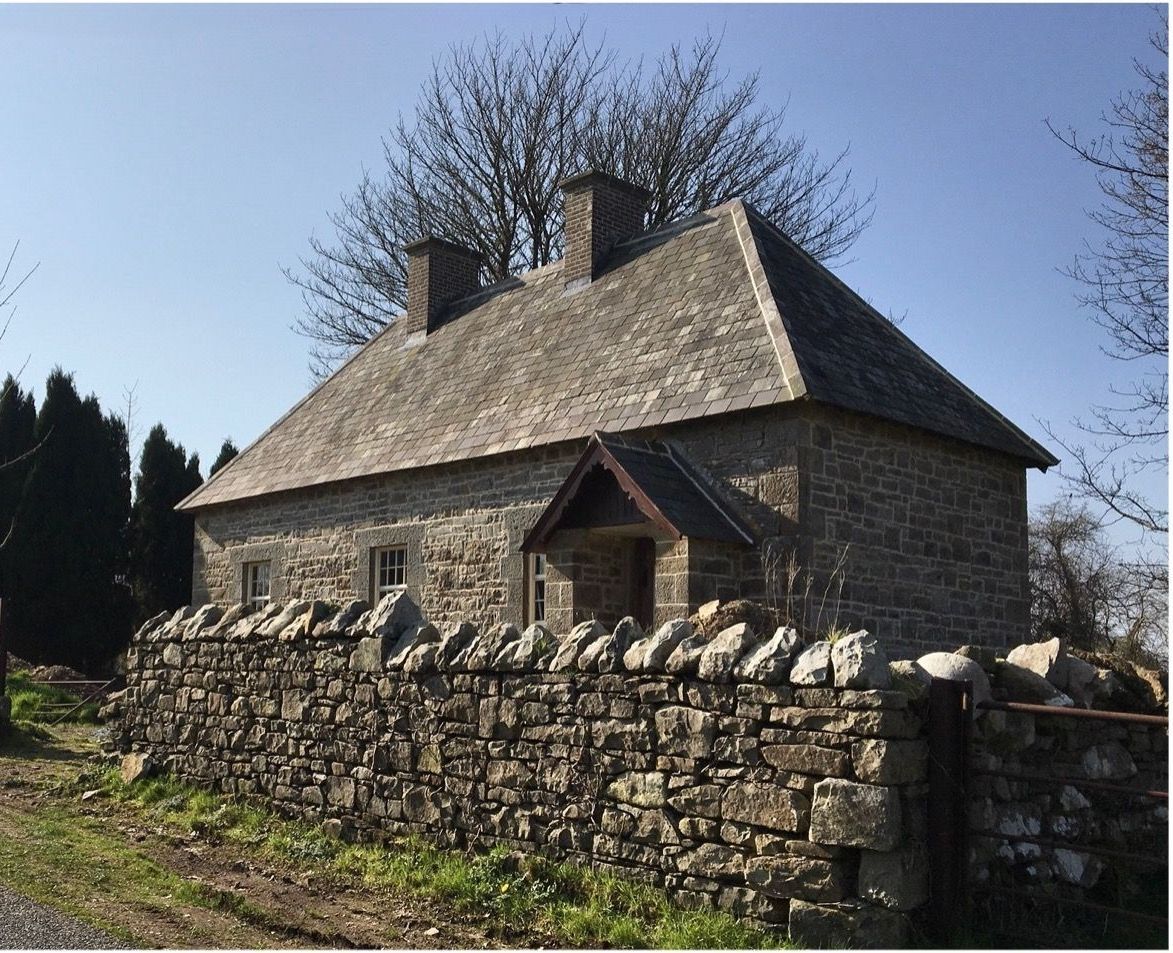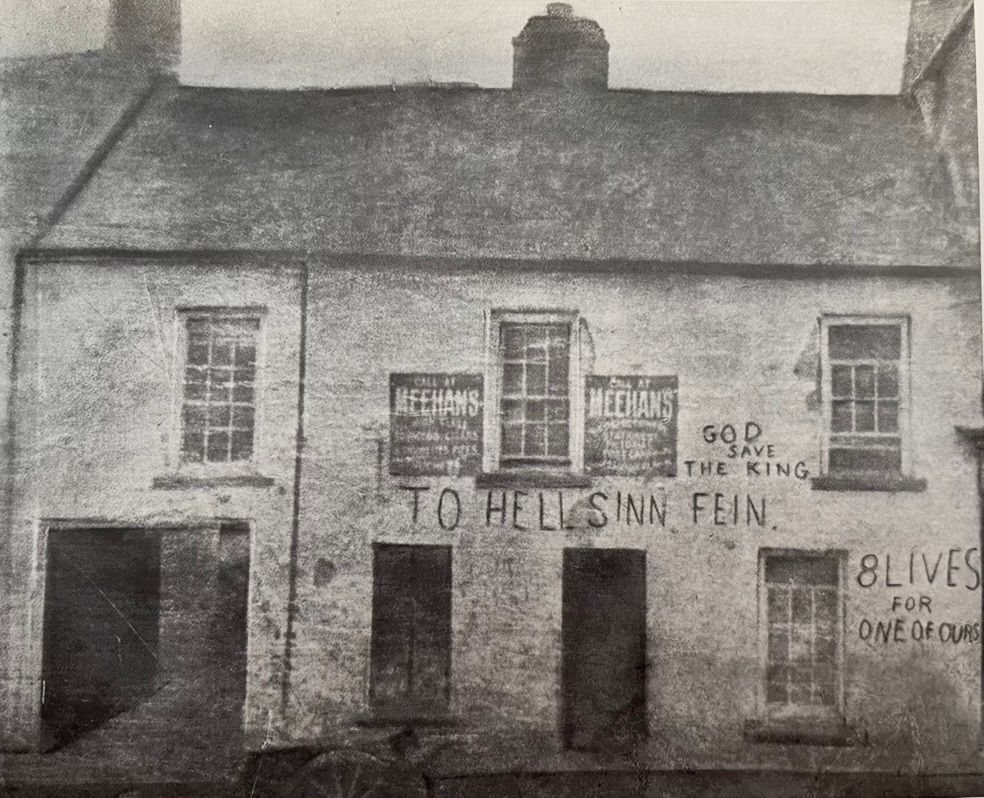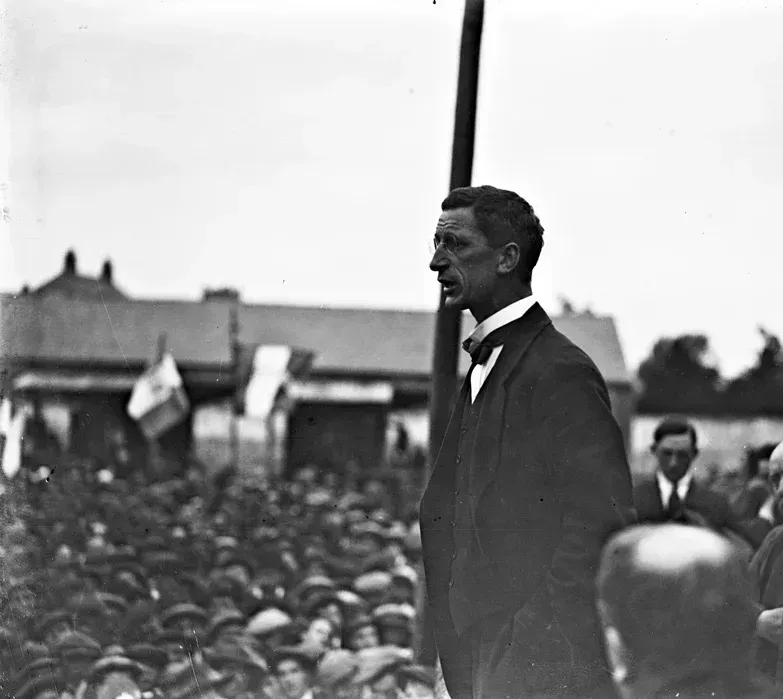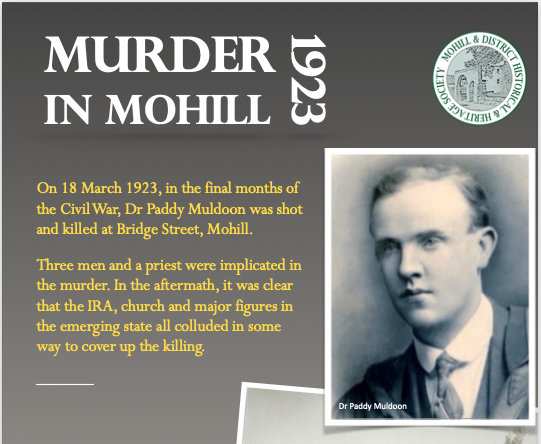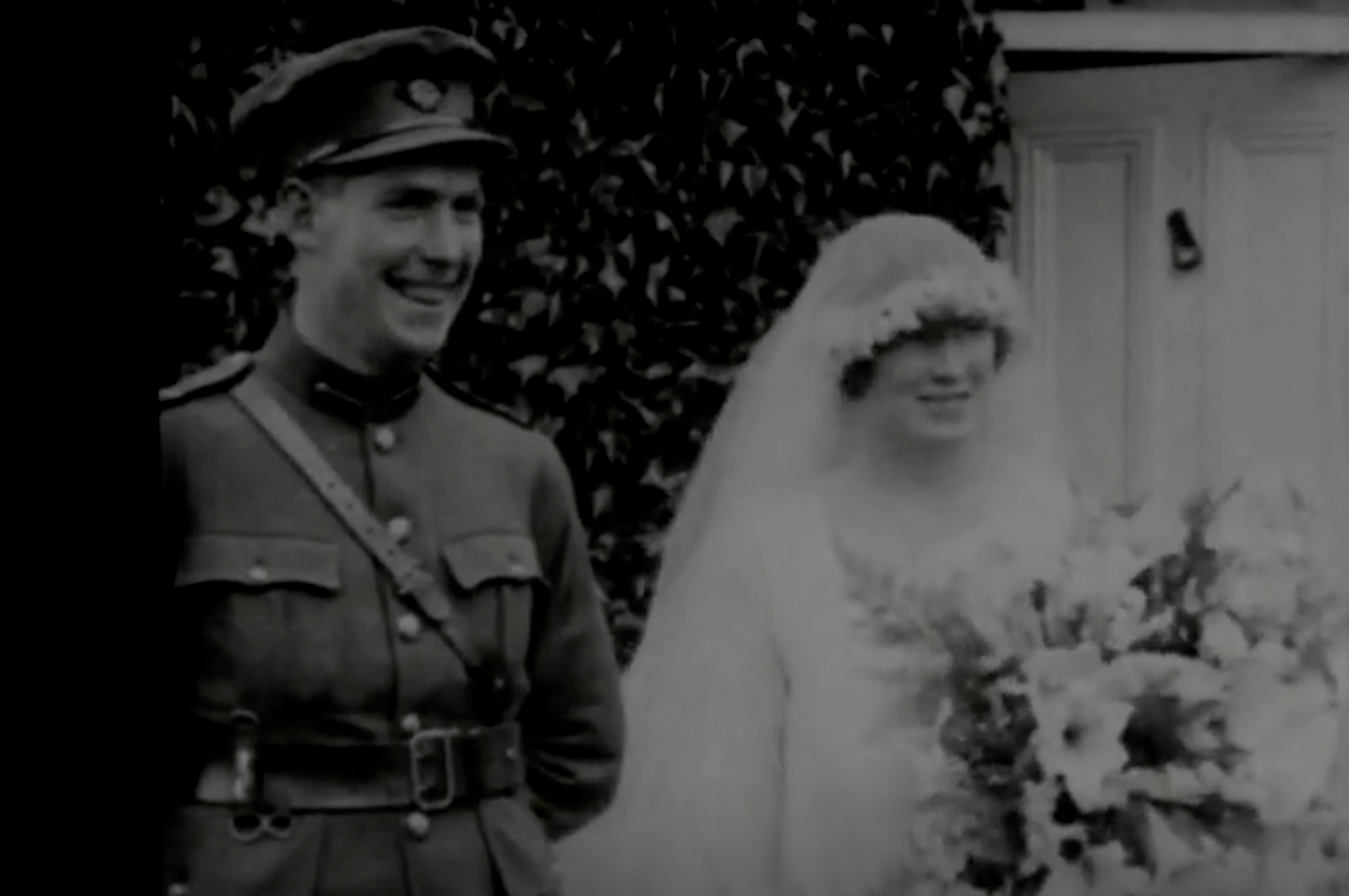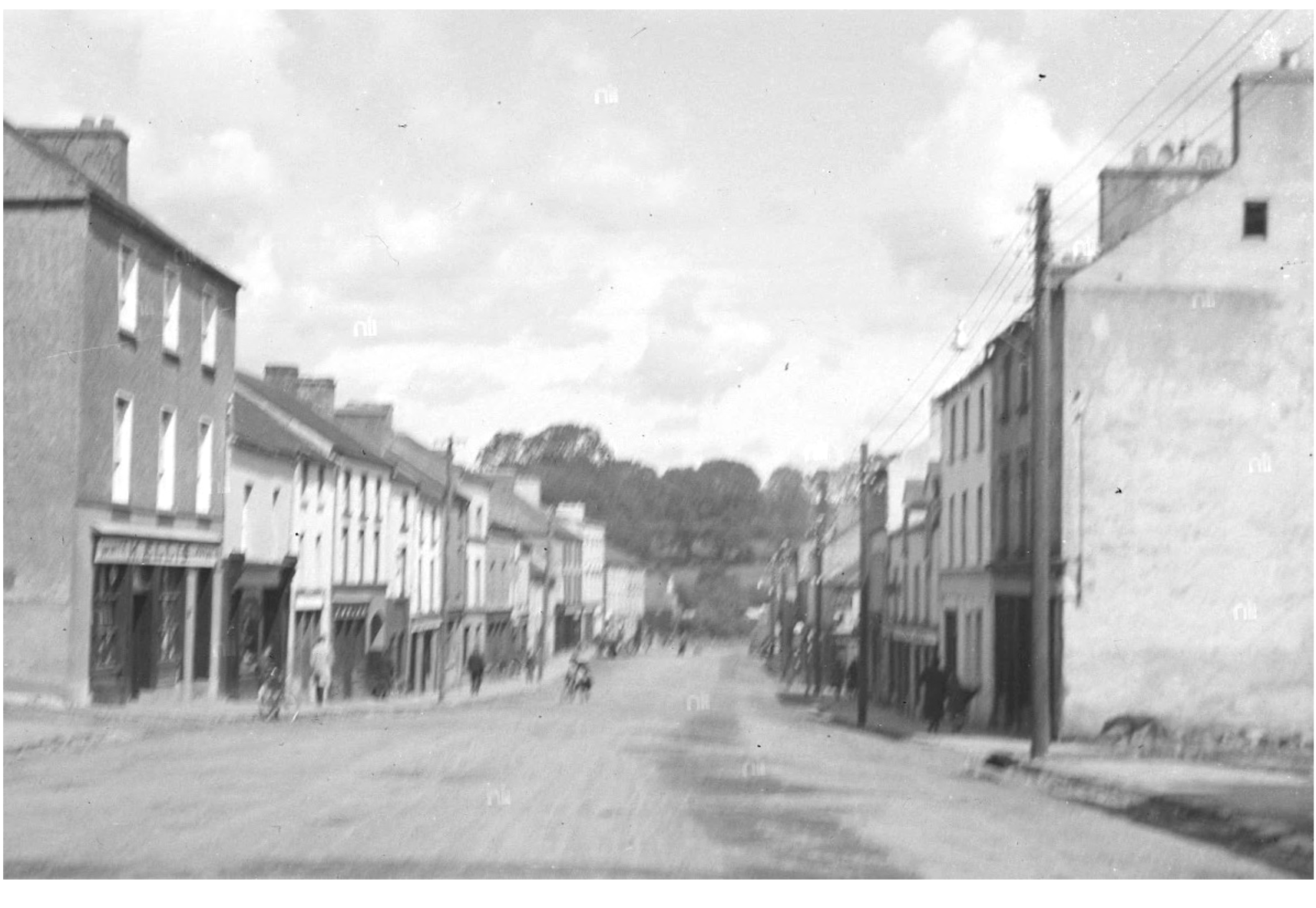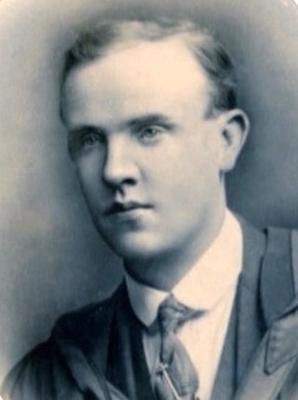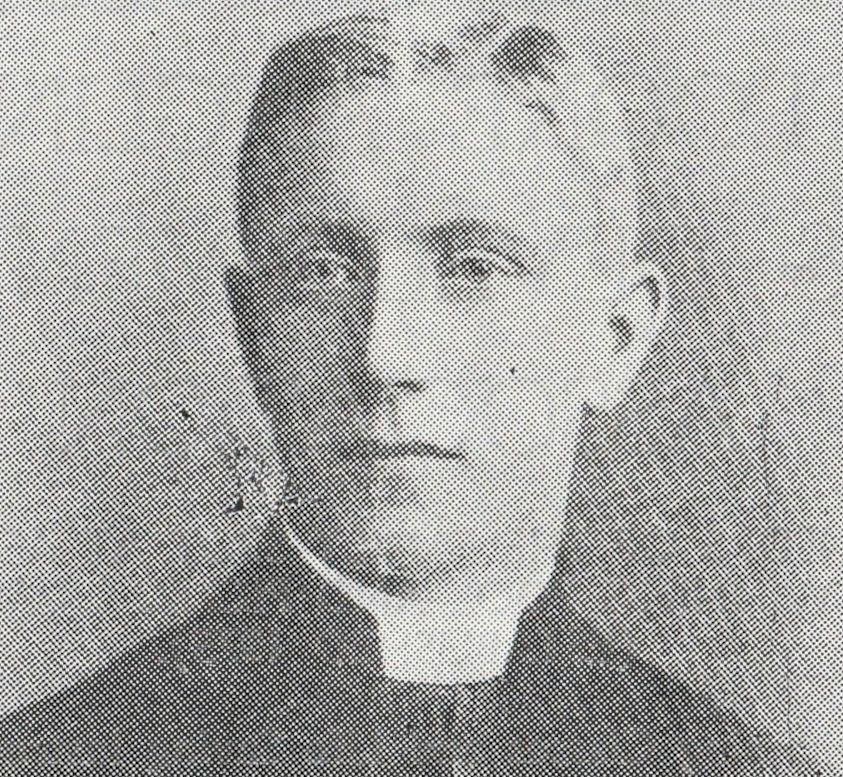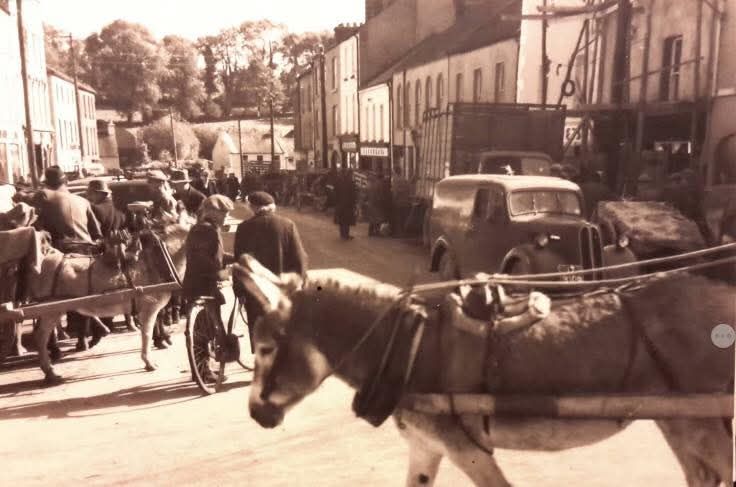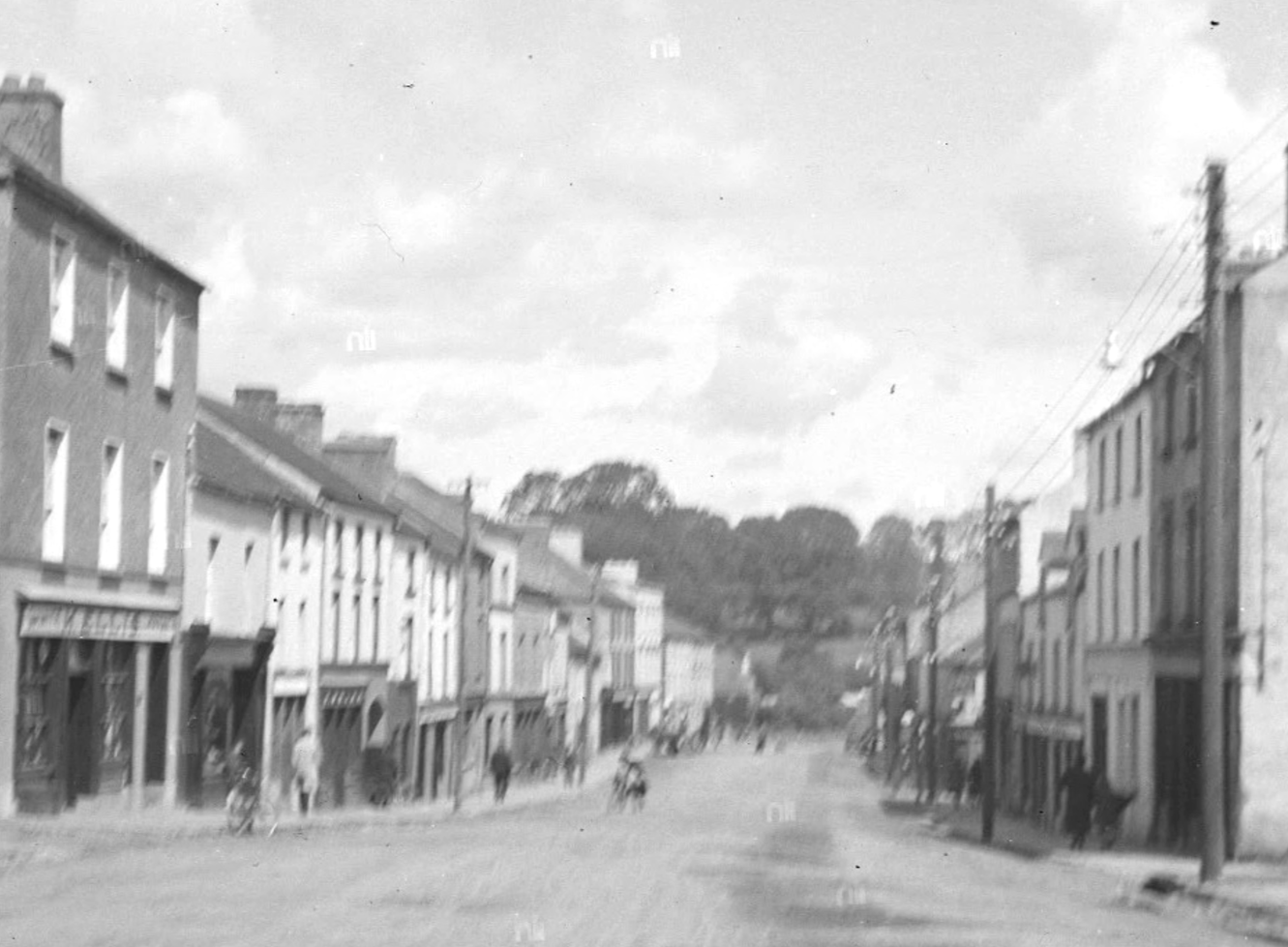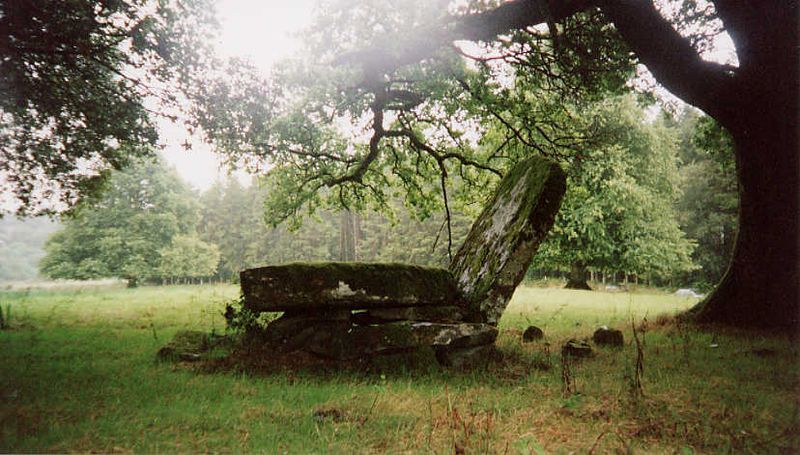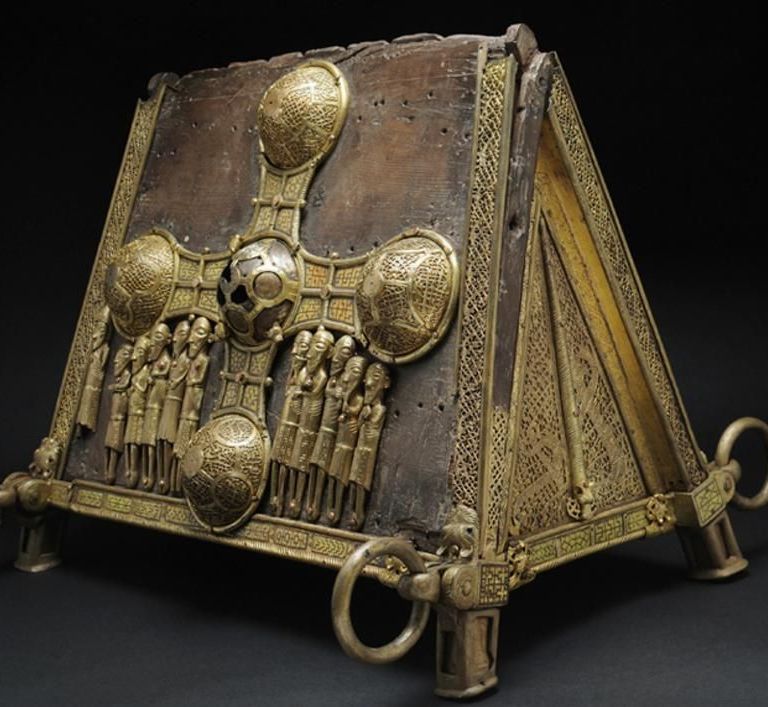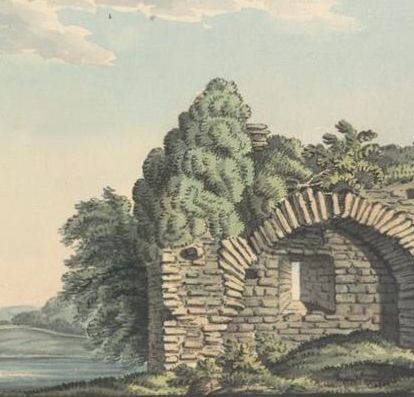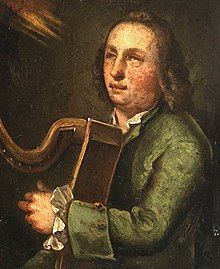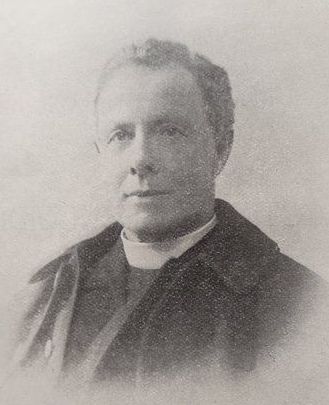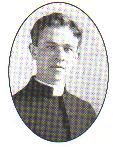The Great Famine in Leitrim and Mohill: figures and data relating to the impact of the Famine through census returns and other sources.
Most of this website addresses the history of Mohill and south Leitrim from the Famine period (1840s) up to the late 1870s.
It includes short articles on the Famine, post-Famine Mohill and other elements of 19th century social history.
There are occasional items on other periods, including early-modern history, and key moments in 20th century history such as the War of Independence and Civil War, and the murder of Dr Paddy Muldoon in Mohill in 1923.
All content written by Fiona Slevin, unless otherwise stated.
A chronology of 15 centuries of Mohill history – from St Manchán to the anti-Jazz movement – is available here >>>
The Famine in Mohill (1846-1850)
Mohill after the Famine: 1850-1875
Mohill 1870: a society in Transition
Through the summer of 2020, I wrote a series of articles for the Leitrim Observer, reproduced here.
150 years ago, Ireland had emerged from the Great Famine and amongst the richest countries in the world. Mohill was thriving and confidence amongst tenant farmers and landholders was growing. The short series of articles looks at how Leitrim and Mohill emerged from the famine, what life was like in 1870, and what changed economically and socially to enable Mohill, Leitrim and Ireland to transition towards independence.
Click opposite to read the related article.
Valentine's Day 1858
Who knew that one could buy Valentine's Day cards in Mohill in 1858?!
An ad for cards ranging in price from a penny to 5 shillings is intriguing.
This article traces the origins of Valentine's Day and the practice of sending cards to lovers.
Mohill and the Great Exhibition 1851
In May 1851, at the Great Exhibition, Letitia Veevers from Mohill exhibited a number of lace and other products using unconventional plant fibres, including a range of wild and cultivated flowers.
Food and diet in post-Famine Mohill
Read about recipes and remedies recorded by the housekeeper at Lough Rynn, as well as about the diet of ordinary people.
The Smallpox epidemic and vaccination in Mohill, 1871-72
The 1871-72 smallpox epidemic killed over 4,000 people across Ireland, but five deaths in Mohill were unusual. Read how the local doctors and Poor Law guardians managed the epidemic in Mohill with a rigorously implemented vaccination programme.
Mohill in the 20th century
Decade of Centenaries
Mohill and south Leitrim during the decade of centenaries: some people and events that marked the War of Independence and Irish Civil War.
Monaghan Day
The largest fair in the year in Mohill, and arguably the most significant date in the town year, was Manchán Day – or Monaghan Day – held on 25 February each year. On Monaghan Day farmers and dealers travelled to Mohill from far and near to buy and sell livestock.
Click on the image to read an article by Joseph Gilchrist, published in the Leitrim Guardian 1977
The decline of the ascendancy
An interview with Marcus Clements, last of the Clements family to reside in Lough Rynn. Produced in the 1970s by RTÉ, the film contains fascinating footage of the Lough Rynn estate and its owners.
Click on the image to read more
Mohill Town in the late 1930s
In 1937/38, teachers around Ireland were to gather stories about local places, customs and stories. In Mohill, Archibald Oliver Edward (AOE) Bradshaw wrote a number of poems, including this one called Mohill Town. The Schools Collection is on dúchas.ie .
Click on the image to read AOE Bradshaw's poem. I updated it with additional verses to reflect Mohill today.
